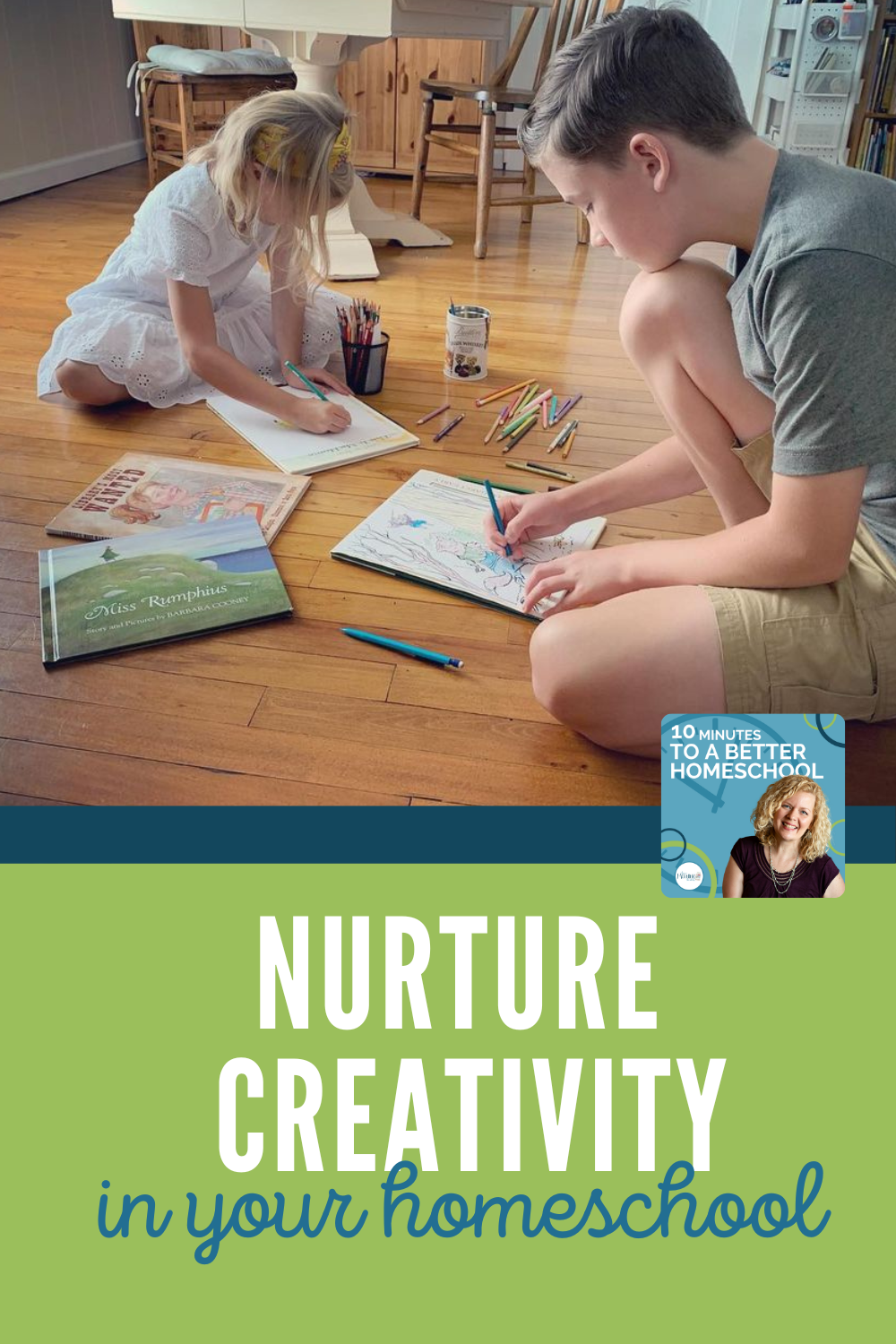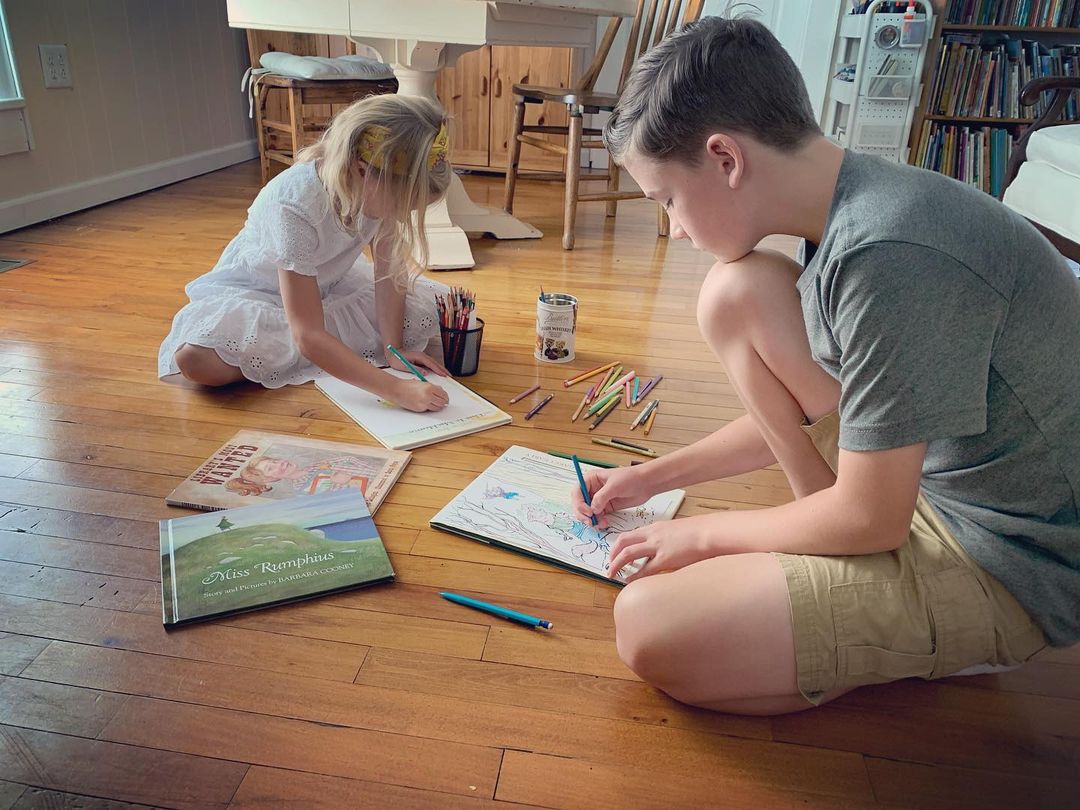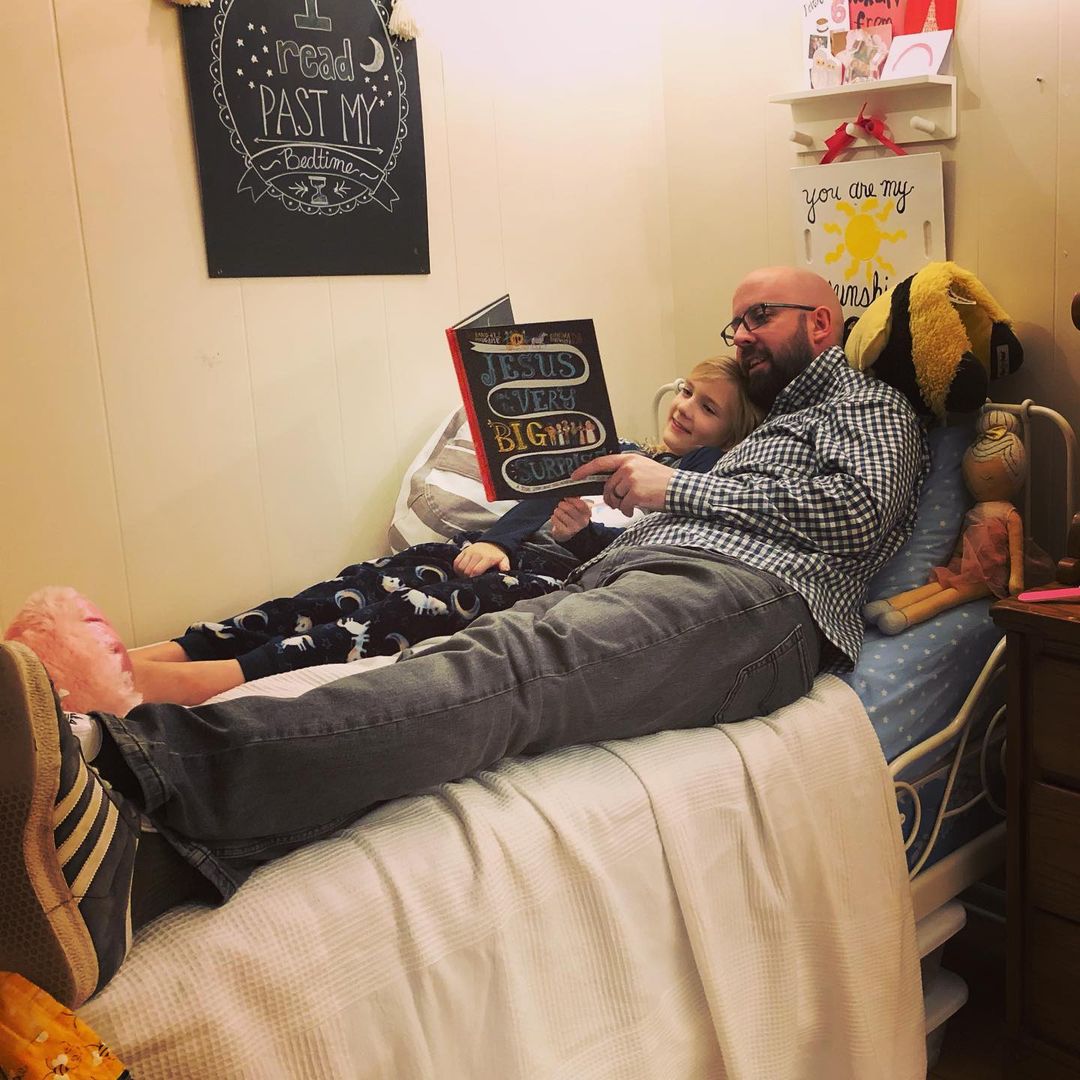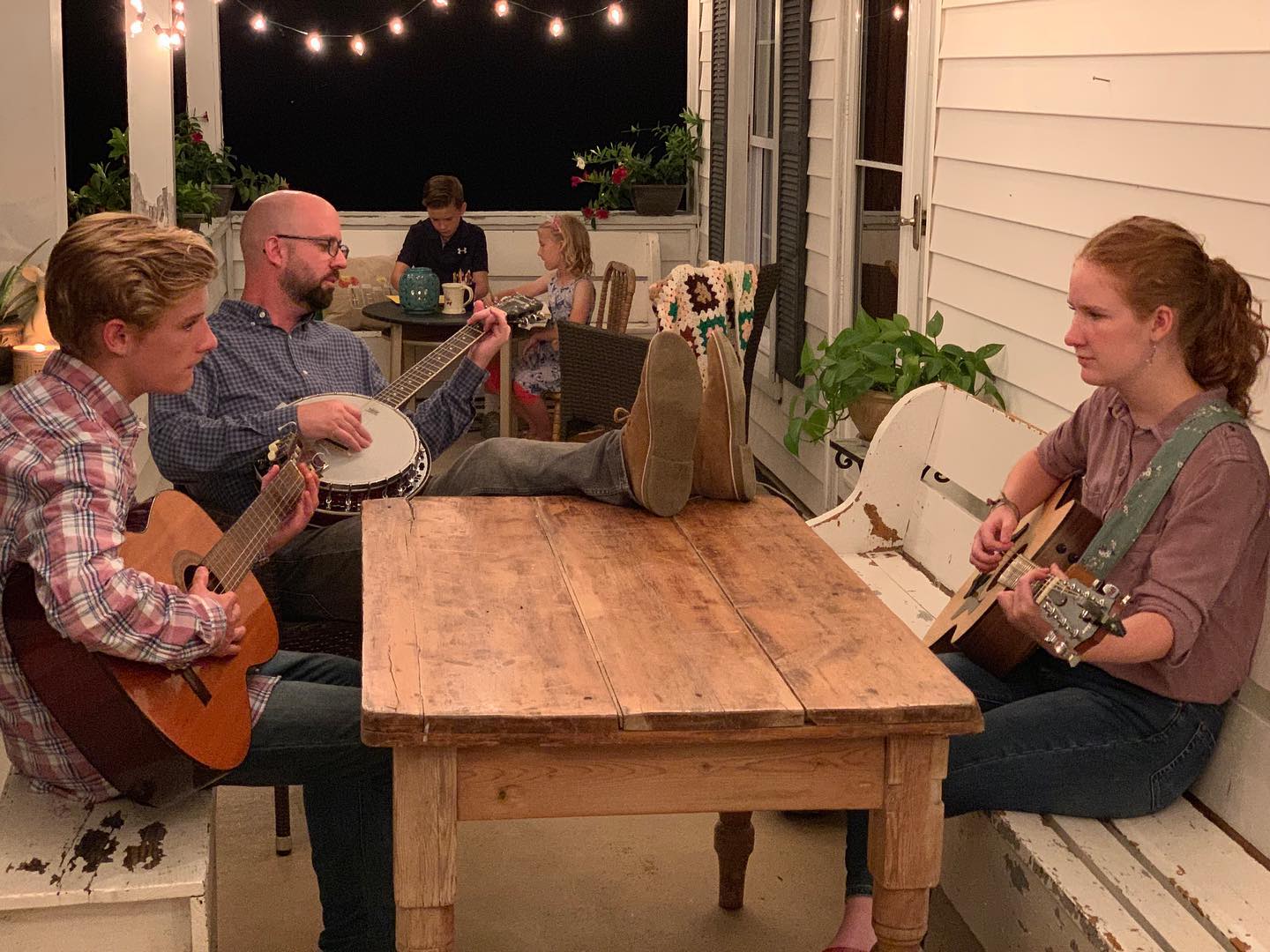
What if you have kids who have a particular creative talent? How do you go about nurturing that talent or just creativity in general in your kids?
Today I’m joined by beloved children’s author S.D. Smith to chat about the keys to encouraging creativity in our homeschool students. We touch on your role as the parent and also tips for what you can do if you don’t feel like a creative person yourself.
How Can We Help Our Kids Be Creative
The first thing is to define what it means to be creative. Often we think of people who are talented at writing or art of some kind. Smith encourages us to look beyond that to other talents that our kids may have.
“All my kids are creative. One is creative on the soccer field. He’s really inventive, is good at math and that kind of thing. Kids are creative in different ways,” he explains. We don’t want to discount that.
That aside, when it comes to the avenues that are traditionally considered when we talk about creativity — things like writing, art, and music there are a few things we can do as parents.
First, encourage.
“There’s nothing that replaces encouragement. Encouragement is so vital. That’s like a lifeblood,” Smith explains. “Somebody’s got to be in your corner. For me it definitely was my mom. My mom thinks I’m some sort of combination of Bob Dylan and Batman and I don’t know what, but I always felt that from her, I felt that encouragement from the very beginning.”
This can sometimes be difficult for homeschool parents, because they have to balance the unconditional encouragement with holding kids accountable for getting their work done.
Smith shares, “I think about the C.S. Lewis and JRR Tolkien. When Tolkien was writing the Lord of the Rings, he would share the chapters with C.S. Lewis, his good friend. Lewis was a big champion for him, saying you’ve got to keep going and keep going. He was a massive encouragement.
Then, when it came time for Lewis to share the Lion, the Witch and the Wardrobe, the first book of the Narnia series, Tolkien kind of hated it. He was a little bit of a curmudgeon. He was a purist about storytelling and Lewis is throwing in all kinds of weird stuff in these stories — the mythology wasn’t as coherent. That stung.
I think we very likely could have had no Narnia if it weren’t for a man named Roger Lancelyn Green who told Lewis you have to publish this. That encouragement was so powerful in Lewis’s life. I think that we all need people like Roger Green. There are tons of Tolkiens in the world — tons of people ready to tell you it’s not good enough, that you’re not good enough. And of course we have our own sort of inner voice, the internal sort of monologue of our own voice telling us things and not always telling the truth.”
Other than encouragement, Smith next offers self-discipline as something to teach.
“Moving towards self-discipline is so important. Training habits — your creative kid needs things where you say, no, you’ve got to clean your room. You’ve got to learn how to balance a budget or make a meal plan or those kind of things. We’re trying to teach our kids to be like people who can function. It’s so valuable because creative people often get let off the hook with that kind of thing.
They often say, well, I’m sort of above those rules or I don’t need those rules because I’m the creative. John Dryden said that we first make our habits and then our habits make us.
That is such a powerful gift. To summarize, I’ll just say a big love and big emphasis on habits and discipline are so important. It feels like those go hand in hand.”
Listen to the Podcast:
Set a Creative Trap
Smith also encourages parents not to micromanage the entire process but, instead, to create an atmosphere where creative kids can flourish. You can do this by giving them the time to be creative by keeping formal activities at a minimum and understanding the value of creative pursuits in the scheme of homeschooling and academics.
Remove barriers by doing things like leaving out the guitar, the music, the chord charts, and the tuner so they have everything they need.
Also make space for art by providing the needed supplies plus a place they can work and get messy without having to worry about the floor or the mess they might make.
Make a writing shelf set up with the thesaurus and a jar full of journal ideas, the fancy pens, and bound books with different kinds of paper.
Watch on YouTube:
What if You Aren’t Creative Yourself
Finally Smith has advice for the person who doesn’t feel they can model creativity because they aren’t creative themselves.
“I would push back a little bit and just say that we all have imagination and creativity. It’s a capacity. It’s like intellect. We all have this capacity for imagination too. We don’t have imaginative kids and non imaginative kids. You have people with a higher capacity for that kind of thing, but we can all grow in creativity. That includes us as teachers. It includes all moms.”
Smith feels sometimes adults are resistant to trying new things because they worry about looking foolish.
“We’re concerned about looking foolish so we don’t wanna try new things. It’s much, much easier for us to say I’m bad at basketball or I’m bad at math. We don’t do it because we don’t want to look silly. I understand that.”
This modeling of how to learn something new though, is perhaps the most valuable part.
“The best teachers teach themselves. They don’t teach subjects. They teach themselves. There’s no substitute for joining in and modeling, and you don’t have to be good at it. You don’t have to be great at it. You could model the discipline part. You could model the generosity and the spirit at the heart of these habits.”
Find Jack Zulu and The Waylander’s Key, the new book by S.D. Smith, and his own creative kid, J.C. Smith, wherever books are sold.
- Homeschooling Boys with Durenda Wilson - April 12, 2024
- What About Lab Sciences? with Dr. Moon - March 29, 2024
- Can I Teach Everything My High Schooler Needs to Know? - March 15, 2024
Leave a Rating or Review
Doing so helps me get the word out about the podcast. iTunes bases their search results on positive ratings, so it really is a blessing — and it’s easy!
- Click on this link to go to the podcast main page.
- Click on Listen on Apple Podcasts under the podcast name.
- Once your iTunes has launched and you are on the podcast page, click on Ratings and Review under the podcast name. There you can leave either or both!





